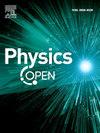通过改变排队策略提高无标度网络的通行能力
IF 1.4
Q2 Physics and Astronomy
引用次数: 0
摘要
本文提出了一种新的排队策略,称为多通道策略,以提高交通容量。根据节点的度,提出了多渠道策略。与之前的单通道策略相比,单通道策略中每个节点只有一个等待队列,数据包只能按照单位时间内数据包排队的顺序进行传输,而多通道策略则调整每个节点的等待队列数量,即每个节点在单位时间内可以处理的最大数据包数量,即程度来设置每个节点的等待队列数量。两种策略的优缺点可以通过两个指标来比较,一是交通能力的提高,另一个是交通负荷。进行了大量的实验模拟。在提高通行能力方面,多渠道策略是单渠道策略的170%左右。在流量负载方面,多通道策略比单通道策略分布更均匀。实验结果表明,多通道策略优于单通道策略。本文章由计算机程序翻译,如有差异,请以英文原文为准。
Enhancing traffic capacity of scale free networks by changing queuing strategy
In this paper, we propose a new queuing strategy, which called multi-channel strategy, to improve traffic capacity. The multi-channel strategy is proposed according to the degree of the node. Compared with the previous strategy, single-channel strategy, in which each node has only one waiting queue so that packets can only transmit according to the order of packet queuing per unit time, the multi-channel strategy adjusts the number of waiting queue that each node has, that is, the number of waiting queue of each node is set according to the maximum amount of packets, the degree, that each node can handle per unit time. The pros and cons of the strategies can be compared by two indicators, one is traffic capacity improving, other one is traffic load. Lots of experimental simulations are conducted. In terms of improve traffic capacity, the multi-channel strategy is about 170% times that of the single-channel strategy. In terms of traffic load, the multi-channel strategy is more evenly distributed than the single-channel strategy. According to the experimental results, the multi-channel strategy is superior to the single-channel strategy.
求助全文
通过发布文献求助,成功后即可免费获取论文全文。
去求助
来源期刊

Physics Open
Physics and Astronomy-Physics and Astronomy (all)
CiteScore
3.20
自引率
0.00%
发文量
19
审稿时长
9 weeks
 求助内容:
求助内容: 应助结果提醒方式:
应助结果提醒方式:


